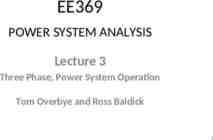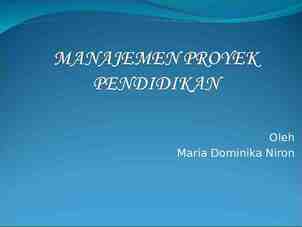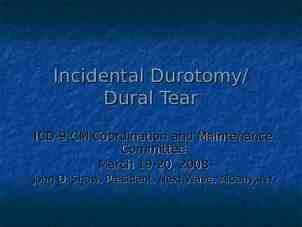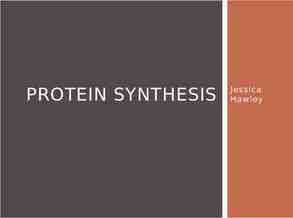Recall: Power & Conflict poetry Explore the poems title first…
23 Slides809.58 KB
Recall: Power & Conflict poetry Explore the poems title first Checking out – to look over and question things ‘Me’ the history in the poem that he is taught is not his. Checking out me history History – relates to your past, the irony here is that it is not his past that he is learning about
Learning aims: To evaluate how the poem links to power and conflict To analyse the language and structure used in the poem To understand the context of Checking out me history.
New knowledge: To understand the context of Checking out me history. John Agard was born in British Guiana (now called Guyana) in the Caribbean, in 1949. He moved to the UK in the late 1970s and is well known for powerful and fun performances of his work. He uses non‐standard phonetic spelling (written as a word sounds) to represent his own accent, and writes about what it is like being black to challenge racist attitudes, especially those which are unthinking. This poem draws on Agard's experience to make us look at the way history is taught, and at how we conceive our identity as we learn about cultural traditions and narratives. It becomes clear that Agard had to follow a history curriculum biased towards whites, especially British whites, so that he learned about mythical, nursery rhyme characters instead of living black people from the past. He challenges this view of history and cites some major black figures to balance the bias and create a basis for his own identity.
Click to hear John Agard reading his poem.
Toussaint L’Ouverture The leader of the Haitian Revolution. His actions led to the establishment of the independent black state of Haiti, transforming an entire society of slaves into a free, self-governing people. In what ways are all of these people important? Jamaican National Hero: led Jamaicans in battle against the British. Nanny de Maroon Why do you think you didn’t know about them? Shaka Mary Seacole Jamaican nurse best known for her involvement in the Crimean War the most influential leader of the Zulu Kingdom
Develop These three words are used at the start of all the stanzas that rhyme. Repetition of ‘Dem’ and ‘me’ creates sense of them and us To analyse the language and structure used in the poem Dem tell me Dem tell me Wha dem want to tell me The repetition highlights the control that white people have over history Phonetic spelling of narrator’s voice links to his identity Agard believes that if you control what people learn about the past, then you can control how people think and what they think about themselves
Develop To analyse the language and structure used in the poem The use of the ‘b’ creates an angry tone Bandage up me eye with me own history Blind me to me own identity Bandages should be source of healing, but in this case they cause blindness. ‘Blind me’ – metaphor for not allowing him to see his own history The alliteration on ‘b’ at the start of these lines shows that Agard believes that information has been deliberately distorted and hidden. The use of non-standard English is used to show his own culture and background which he feels is not acknowledged by the English Curriculum
Develop This quatrain is repeated throughout the poem – in each one a different famous white figure is mentioned. Each quatrain usually ends with the mention of a black historical figure who isn’t taught about To analyse the language and structure used in the poem Dem tell me bout 1066 and all dat dem tell me bout Dick Whittington and he cat But Toussaint L’Ouverture no dem never tell me bout dat The childish rhyme shows how he feels about what he has been told about the past – this is why he mentions characters from nursery rhymes and myth – he is mocking what he has been told and makes them sound trivial
Develop The lines are shorter and they are written in free verse – Agard is using an unconventional form to write about unconventional ideas Strong rhymes and broken syntax show importance of oral communication To analyse the language and structure used in the poem Toussaint a slave with vision lick black Napolean battalion and first Black Republic born Toussaint de thorn to de French Toussaint de beacon of de Haitian Revolution Repetition makes it sound like a chant, creating confident mood These longer verses serve to concentrate on someone famous in black history The mocking tone is not apparent in these sections. They are italicised so that they stand out visually These section are filled with metaphor and positive imagery to convince the reader about how amazing these people are: ‘vision’ and ‘beacon’ contrast with blindness.
Develop To analyse the language and structure used in the poem Dem tell me bout de man who discover de balloon and de cow who jump over de moon Dem tell me bout de dish ran away with the spoon but dem never tell me bout Nanny de maroon Why do you think he compares a nursery rhyme with an important figure from his culture? What’s the stanza about? Note the lack of punctuation in the whole poem. Agard is choosing to reject the rules of punctuation – the poem is therefore purposefully full of enjambment – this represents how he is rejecting white history too Simple rhyme scheme emphasises how silly they are
Develop The metaphors create a positive image of Nanny. She is linked to vision and can see into the future. Suggests she is passionate – linked to warmth and light To analyse the language and structure used in the poem Nanny see-far woman of mountain dream fire-woman struggle hopeful stream to freedom river This language is unusual and original Nanny connected to nature and water – she is also associated with hope and liberty
Develop To analyse the language and structure used in the poem Dem tell me bout Lord Nelson and Waterloo but dem never tell me bout Shaka de great Zulu Dem tell me bout Columbus and 1492 but what happen to de Caribs and de Arawaks too What’s the stanza about? European colonisers compared to natives that resisted slavery – contrast between slavery and freedom. Reference to British history that may be important or significant to white nationals - he doesn’t feel a part of the British history. Bemoans the fact that he isn’t taught about his historical heritage and people that made an impact on his culture. These figures were military men and explorers that may have been influential in taking away others’ cultures.
Develop To analyse the language and structure used in the poem What’s the stanza about? Makes Nightingale sound unimportant - linked to nursery rhyme characters which undermine her Dem tell me bout Florence Nightingale and she lamp And how Robin Hood used to camp Dem tell me bout ole King Cole was a merry ole soul but dem never tell me bout Mary Seacole More references to British historical or legendary figures in mocking tone to show how unimportant they are compared to his real history
Develop This metaphor describes Mary Seacole in a positive light – a yellow sunrise is full of hope and promise for the dying The language used when referencing his own historical figures is much more positive To analyse the language and structure used in the poem From Jamaica she travel far to the Crimean War she volunteer to go and even when de British said no she still brave the Russian snow a healing star among the wounded a yellow sunrise to the dying This woman is inspirational as she travelled far to volunteer despite being told “no” showing defiance and lack of respect for the so-called authorities and doing what was right, without any regard for her own safety. What’s the stanza about?
Develop Repeats phonetic from first stanza reminds us of narrator’s anger To analyse the language and structure used in the poem The repetition of ‘dem tell me’ could represent how Agard felt nagged when he was at school. Dem tell Dem tell me wha dem want to tell me But now I checking out me own history I carving out me identity Emphatic final word – sums up the main theme of having a personal history to create true identity Now that he knows about Toussaint; Nanny de Maroon and Mary Seacole he feels he is able to understand something about the culture he comes from
Develop To analyse the language and structure used in the poem Structure and form Structure The poem alternates between two structures, marked by two different fonts (this helps set Agard’s history apart). The first uses the repeated phrase "Dem tell me" to indicate the white version of history. This is mostly written in rhyming couplets, triplets or quatrains. Interspersed are the stories of three black historical figures: Toussaint L'Overture, Nanny de Maroon and Mary Seacole, told using abbreviated syntax with words missed out, shorter lines and an irregular rhyme scheme. Shape It is perhaps symbolic that Agard uses very thin narrow lines with few words to describe the black heroes. This may reflect the narrowness of taught history. Sound Agard uses variations in spelling to suggest Caribbean dialect (i.e. replacing 'th' with 'd’). This stresses the importance of carving out his "own identity". End rhyme is heavily used, emphasised by adapted sections of nursery rhymes (i.e. the dish who ran away with the spoon, and Old King Cole). This use of rhyme, creates a sing‐song tone that ‐ combined with the use of nursery rhymes ‐ suggests the narrator's contempt for the white version of history. The link from one line to another also builds the anger in these sections. Tone Like the structure, the tone also divides into two. The "Dem tell me" sections have an accusatory, rebellious tone to them, created by repetition and short lines at the beginning. In contrast, sections on Toussaint L'Overture, Nanny de Maroon and Mary Seacole are celebratory in tone, emphasised by images of nature and words like "vision", "see‐far" and "star". This poem has no obvious punctuation, this can speed up the poem and increases the anger and frustration of the voice.
Develop To analyse the language and structure used in the poem Language Imagery In the "Dem tell me" sections the poet refers to nursery rhyme characters and other non‐historical people (even "1066 and all dat“ may refer to a book famous for its irreverent parody of histories of England). The suggestion is therefore made that taught history may not be exactly accurate even before you consider the exclusion of black people. The sections on individual black historical figures contain stronger imagery, with use of nature metaphors to powerful effect. Toussaint L'Overture is a "thorn" and a "beacon". Nanny de Maroon is linked with a mountain, fire and rivers. Mary Seacole is described in dramatic imagery as a "healing star" and a "yellow sunrise" to the patients she treats. All three are associated with light ‐ "beacon", "fire‐woman" and "star" ‐ suggesting that they play metaphorical roles, illuminating the poet's true historical identity. Repetition Agard uses repetition of "Dem tell me," to impress how he has been forcibly taught what to believe and what to think. The repetition makes for a strong, assertive voice – a sense of anger, outrage and disbelief (the repetition also creates a sense of rhythm).
Consolidate: To evaluate how the poem links to power and conflict How does the poem ‘Checking out me history’ link to power and conflict?
Consolidate: The speaker is angry that Black culture and history has been neglected The speaker implies that the history he has been taught is a fiction To evaluate how the poem links to power and conflict The poem suggests that the process of education involves passive people being bombarded with information by those who have power and/or authority. The poem makes clear that cultural transmission (the passing on of knowledge about culture and history) starts at a very early age. The poet is careful to use humour to make his point in a non-threatening way The poem can be interpreted as encouraging self-empowerment and pride in one’s culture. The poem equates identity with knowledge of your own cultural and racial roots. The poet values the qualities of independence and courage .
Consolidate: To evaluate how the poem links to power and conflict Agard argues that there is only a one sided view of history and states that this is not enough, that he was never told about the more important aspects of his own historical and cultural background. He claims that this one sided teaching has “blind [ed him] to [his] own identity”, making him a half taught individual, with little concept of his own culture. The metaphorical reference to the way they ‘bandage up’ his eyes suggests he is deliberately prevented from seeing the truth. He uses the example of “Toussaint L’Ouverture” as one thing he has not been told about and should have been, explaining how “Toussaint” was “a slave with vision,” who “lick back Napoleon battalion”. To prove his point further he refers to “Nanny de maroon” and asks us to consider why he has not been taught about such individuals. He is proud enough to say that he has learnt about “Lord Nelson and Waterloo” , yet adds that to not be taught anything about “Shaka de great Zulu” is wrong, especially when British education covers people like “Columbus and 1492.”
Consolidate: To evaluate how the poem links to power and conflict His view is that we should know about everyone who has fought or stood up for a cause, who are famous in their own countries, so that we can learn to live a life where we understand each other a little more. Agard then uses the example of the “Caribs and de Arawaks” to further stress his point, saying how he knows very little about what happened to these people or about how they were treated by their oppressors at their time of conflict in their history. He then makes an interesting comparison between well known “Florence Nightingale” and “ole King Cole” and the more unknown “Mary Seacole” (a figure not considered by the educational system, even though she was “a healing star among the wounded, a yellow sunrise to the dying” and as important as Florence Nightingale). To end, he states that he is now in his own time and at his own pace, “carving out [his own] identity” because he is learning now about what he considers to be important. The last line "But now I checking out me own history" suggests determination in his voice and a belief that things are going to change.
Review Which other poems in the anthology could you link to Checking out me history and why? London (William Blake) – Both poems challenge those in power (government, religion, colonialists) London is however a bleak, negative poem. In contrast, Checking out my History offers a solution to the power disadvantage it articulates.
Review London vs Checking Out Me History Similarities Both of the poems challenge the power of humans from high authorities In London, Blake challenges the church for not helping the poor - "blackening church" blackening shows how Blake is criticising the Church through colour imagery In Checking Out Me History, Agard challenges the authority of governments through phonetic spelling of "Dem tell me" to show the he was opposed to the British education system of the time Differences London has a cylical structure, as suffering is the focus at the start and end of the poem. The quatrains also show how the suffering is repetitive, and nothing is being done to change it. This is a result of human power Checking Out Me History shows a solution it focuses on people within Black History, and talks of them in italics to draw emphasis to them, which contradicts what Agard would have been taught in school Overall comparison Both London and Checking Out Me History are poems that express the poets anger towards the misuse of power by those with authority, but the main difference is that while Agard shows a solution, Blake does not, showing how they have different viewpoints on if it is possible to change.




























